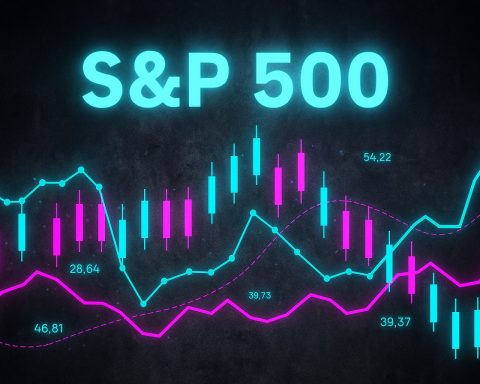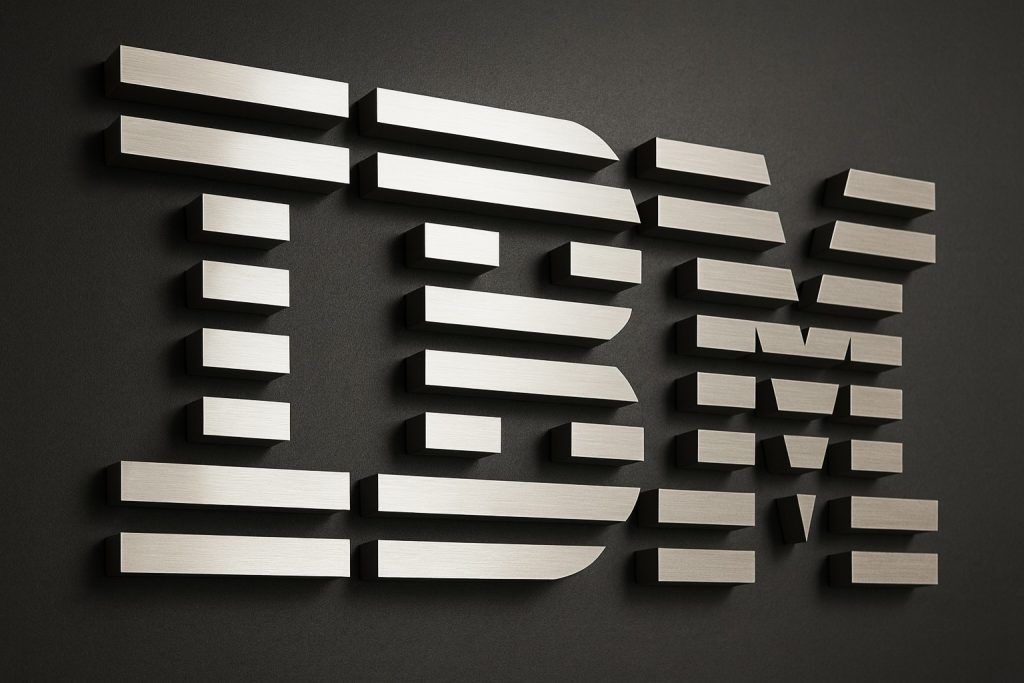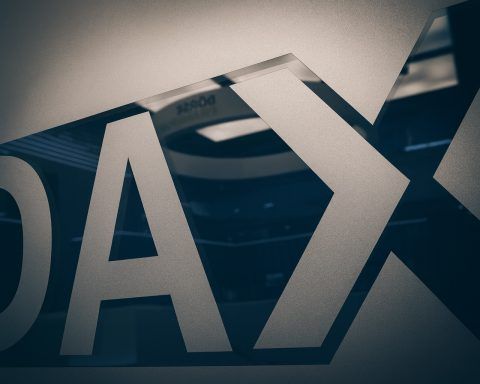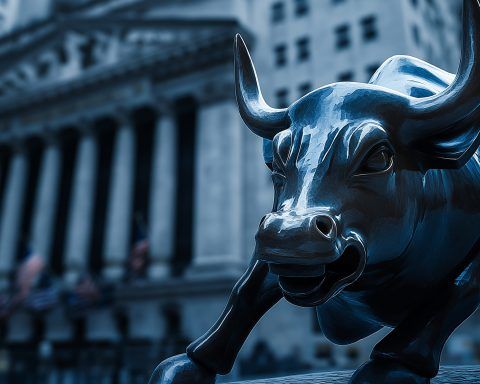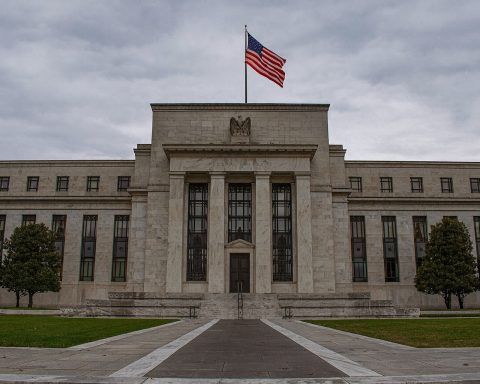- Biggest Cash Injection Since 2020: On October 31, the U.S. Federal Reserve injected about $50 billion into the banking system via overnight “repo” loans – the largest liquidity boost since the 2020 pandemic crisis [1] [2]. Banks tapped the Fed’s Standing Repo Facility (SRF) in record amounts to shore up cash amid a sudden short-term funding squeeze [3] [4].
- Repo Market Crunch at Month-End: The cash crunch hit at month-end when financial firms scrambled to meet payment obligations. Key overnight lending rates briefly spiked above the Fed’s target range, signaling a shortage of cash [5]. In response, the Fed lent $50.35 billion through the SRF in two operations (one morning, one afternoon) to eligible banks – the first time the SRF “functioned as designed” to backstop markets, as repo expert Scott Skyrm observed [6]. By the following Monday, the Fed had to inject another $22 billion, confirming the stress wasn’t just a one-day blip [7].
- Fed Halts QT to Avoid Credit Crunch: Fed officials moved swiftly to prevent a broader credit crunch. Chair Jerome Powell announced an early end to “quantitative tightening” – the Fed will stop shrinking its balance sheet on December 1 – because bank reserves are now “about as low as they can go” without causing market dysfunction [8]. The Fed had already cut interest rates in late October and emphasized it would not risk “causing an accident” by draining more liquidity [9] [10]. This policy pivot aims to ensure banks have ample cash and avoid a 2008-style credit freeze.
- Is This a Warning Sign? Some analysts worry the Fed’s emergency repo loans are a “canary in the coalmine” – an early warning of financial stress [11] [12]. Money market insiders note that U.S. bank reserves have plunged to about $2.8 trillion (a four-year low) as the Fed’s tightening and massive Treasury bond issuance drained liquidity [13]. Short-term borrowing costs (like the overnight SOFR rate) jumped to their highest in years, a red flag reminiscent of past crises [14] [15]. “US funding rates…have been rising…which signals some type of market stress,” says fund manager Charlie Jamieson [16]. He and others fear the Fed’s move may be “another canary in the coalmine” hinting at deeper issues [17].
- Technical Glitch or Liquidity Crisis? Not everyone sees doom ahead. The spike in repo borrowing quickly subsided once the month-end passed – SRF loans fell from $50 billion Friday to just $4.8 billion by Tuesday [18]. This suggests the Fed’s intervention worked as a short-term shock absorber. Analysts at Wrightson ICAP expect funding pressures to “ease relatively quickly” after such calendar-driven spikes [19]. Reserve Bank of Australia Governor Michele Bullock downplayed the threat, saying “I don’t think there will be a credit crunch…that’s exactly what the Fed is trying to avoid” [20]. Still, officials like Dallas Fed President Lorie Logan were “disappointed” banks hadn’t used the SRF more proactively in recent months [21] – implying some fragility in the system’s plumbing.
- Stocks at Record Highs, But Jitters Emerge: Ironically, even as the Fed was quietly pumping liquidity, U.S. stock markets have been rallying. The S&P 500 hit multiple all-time highs in October, fueled by an AI-driven tech boom and abundant market liquidity [22]. Easier Fed policy (rate cuts and an end of tightening) typically supports stocks, and indeed analysts expect short-term yields to drift lower in coming weeks on rising bets that the Fed will cut rates further in 2025 [23]. However, market euphoria met a reality check on November 4 when major bank CEOs warned of a potential stock bubble. The heads of Morgan Stanley and Goldman Sachs cautioned that equity valuations look stretched, sparking a 1–2% one-day drop in the S&P 500 and Nasdaq [24] [25]. JPMorgan’s Jamie Dimon has also warned of a possible market correction in coming months amid geopolitical risks and frothy prices [26]. The message: while Fed liquidity is bullish for markets, investors are growing uneasy that today’s “loose” financial conditions and record-high stocks may not be sustainable [27] [28].
Fed Pumps Billions to Calm a Cash Crunch
Late last week, U.S. money markets showed unusual signs of strain. On Friday, October 31, banks and dealers suddenly found cash in short supply to meet their routine funding needs. Overnight lending rates – the cost for banks to borrow short-term cash – surged above the Federal Reserve’s target range, indicating that banks were scrambling for dollars [29]. In response, the Federal Reserve executed a massive repo operation to flood the system with cash and stabilize rates.
In a repo (short for repurchase agreement), a bank can borrow overnight from the Fed by posting high-quality securities (like U.S. Treasury bonds or mortgage-backed bonds) as collateral, then buying them back the next day [30]. This common but usually modest operation became dramatic: the Fed’s Standing Repo Facility – a permanent liquidity backstop launched in 2021 – lent out a record $50.35 billion in two rounds that day [31] [32]. For context, that’s the highest one-day cash infusion since the Fed’s emergency interventions in early 2020 [33]. “This was the first time the SRF functioned as designed,” said veteran repo trader Scott Skyrm, noting the facility finally got heavy use when private lending rates shot up [34]. The Fed effectively acted as banker to Wall Street, accepting about $50 billion in Treasuries and mortgage bonds from banks in exchange for sorely needed dollars [35] [36].
Crucially, this cash crunch coincided with the month-end, a time when banks often pull back lending to tidy up balance sheets and settle obligations. “The plumbing of the US banking system was somewhat stressed at month-end,” observed Henry Jennings, a portfolio manager, calling it a “short-term” credit crunch [37]. Indeed, on that Oct. 31 Friday, several key short-term rates jumped well above 4%, breaching the Fed’s then-4% ceiling for overnight loans [38]. Banks effectively ran out of cash and rushed to the Fed for help.
By design, the Fed’s repo facility offers a ready supply of funds at a fixed rate (about 4.0% at the time) to cap how high market rates can go [39] [40]. Any bank or dealer with eligible collateral can borrow at the SRF instead of paying more in the open market, which in turn pulls market rates back down. That safety valve kicked in forcefully: the Secured Overnight Financing Rate (SOFR – a broad repo benchmark) had spiked to ~4.22% on Oct. 31 but eased to 4.13% after the Fed’s intervention calmed the scramble [41]. “That spike [in the Fed’s repo facility usage] has gone hand in hand with a rising SOFR,” notes strategist Gerard Minack, meaning funding markets got tight enough to trigger the Fed backstop [42].
Notably, the liquidity support didn’t end on Friday. The following Monday (Nov. 3), the Federal Reserve Bank of New York – which conducts these operations – injected another $22 billion into markets [43]. This time, banks put up $7.75 billion in Treasuries and $14.25 billion in mortgage securities for overnight cash [44]. In simple terms, Wall Street ran short of cash on Friday night and needed another top-up on Monday [45]. Such repeated heavy usage of the repo facility was unprecedented in its short history, confirming that stress was not a one-off fluke.
However, there was also a reassuring sign: by Tuesday and Wednesday of this week, the storm seemed to pass. Banks’ demand at the SRF plunged back to $4.8 billion total [46], indicating that as soon as the month-end cash crunch was over, normal conditions started to return. The Fed got its money back as those repo loans matured, and banks’ collateral was returned [47]. In other words, the liquidity that the Fed temporarily added was promptly withdrawn once the immediate need subsided [48]. This suggests the Fed’s intervention worked – averting a broader panic and meeting short-term needs without permanently flooding the system. “SRF did its job and went back to sleep,” as financial commentator Wolf Richter put it, after usage fell back to trivial levels [49].
What’s Draining Liquidity?
Why did the banking system suddenly feel a cash crunch? The situation has been brewing for weeks due to a combination of factors, creating a perfect storm in money markets:
- Federal Reserve Tightening: For the past three years, the Fed has been reversing its easy-money policies. It hiked interest rates aggressively and engaged in “quantitative tightening (QT)” – allowing its huge bond portfolio to shrink – to pull excess money out of the financial system. Since mid-2022, the Fed’s balance sheet has dropped from a $9 trillion peak to about $6.6 trillion [50]. This QT effort siphoned off trillions in liquidity. The goal was to reach a level where bank reserves were just above the minimum needed for stability [51]. By October, however, there were signs the Fed “may have taken too much liquidity” out [52]. Short-term rates had been drifting upward on their own – a hint that bank reserves were getting scarce, just as happened in 2019 when the repo market last malfunctioned [53].
- Treasury Borrowing Surge: At the same time, the U.S. government has been issuing vast amounts of Treasury bonds to fund large budget deficits. This year’s heavy Treasury issuance effectively competes for the same pool of dollars in financial markets, soaking up cash that might otherwise sit as bank reserves or in money-market funds [54]. Analysts point out that the Fed was shrinking its balance sheet just as the Treasury was swelling its own borrowing: “the US government is also selling bonds…to raise money to fund its ballooning deficit. It has put pockets of global money markets under strain,” ABC News noted [55]. The combination of Fed QT and Treasury’s debt flood drained liquidity faster than markets anticipated [56].
- Shrinking Bank Reserves: Those twin forces – Fed tightening and Treasury borrowing – showed up in the data: bank reserve balances at the Fed plunged to roughly $2.8 trillion in late October, the lowest in over four years [57]. In just the past few weeks, reserves fell by over $100 billion, the sharpest drop since 2020 [58]. As banks’ cash cushions thinned out, they became less willing to lend excess funds in repo markets, which pushed borrowing costs higher. “When reserves fall, liquidity dries up. Funding markets tighten,” the Economic Times noted starkly [59] [60]. Importantly, a crucial buffer of cash has also evaporated: the Fed’s reverse repo facility (where money-market funds stashed excess cash) has seen balances collapse from nearly $2 trillion last year to almost zero now [61]. That means extra liquidity that had been parked safely is now flowing elsewhere – likely into financing the Treasury’s debt – leaving market plumbing more vulnerable to shocks.
- Quarter-End and Shutdown Effects: Timing magnified the crunch. Month-ends and quarter-ends are notorious for “volatile and transitory needs for liquidity” as firms square up their books [62]. October 31 was both month- and quarter-end for many, so normal seasonal pressure was expected. But another twist came from Washington: a U.S. government shutdown in October led the Treasury to temporarily stop some spending. Meanwhile, tax receipts and ongoing bond sales kept rolling in, causing the Treasury’s cash account at the Fed (the TGA) to balloon by about $200 billion in a few weeks [63] [64]. When the government hoards cash in its Fed account, that money is sucked out of the banking system. “The TGA has sucked up $700 billion in liquidity in four months,” Wolf Richter notes, as the Treasury rebuilt its coffers after the debt-ceiling deal [65]. This rapid drain of liquidity from banks, on top of QT, likely set the stage for the repo squeeze. Once the shutdown ended and the Treasury started paying its bills in early November, some of that cash began to flow back out, which should gradually replenish reserves [66] [67]. But the episode underscored how fragile the balance has become – a modest hiccup in government cash flows helped trigger a spike in repo borrowing.
In sum, tightening monetary policy, heavy debt issuance, and temporary cash hoarding by the government all combined to strain the system’s “ample reserves.” The Fed’s own commentary recognized this: “Signs have clearly emerged” that liquidity was getting uncomfortably tight, Powell said, which risked “introducing difficulties in the money markets” [68]. In fact, Fed insiders had been monitoring rising repo rates as a signal that their QT had run its course [69]. The uncomfortable reminder of September 2019’s repo turmoil – when the Fed temporarily lost control of short-term rates due to low reserves – loomed large [70]. The SRF was created precisely to avoid a repeat of 2019’s sudden cash squeeze, and last week it was put to the test for the first time.
Fed Signals Pivot to Prevent ‘Crunch’
Facing these flashing warning signs, the Federal Reserve moved to reassure markets that it won’t let liquidity dry up further. At its policy meeting just before Halloween, the Fed not only decided to hold or trim interest rates (as widely expected), but it also made a pivotal announcement: quantitative tightening will end by December 1 [71]. “Our long-stated plan has been to stop balance sheet runoff when reserves are somewhat above” the minimum needed for “ample” conditions, Powell explained – “signs have clearly emerged that we have reached that standard” [72]. In plain English, the Fed saw enough evidence that the tank was close to “empty” and chose to hit the brakes on QT a bit early. Markets had assumed QT would continue into early 2026, but Powell and his colleagues decided there was no room to keep draining cash without “causing an accident”, as one analyst put it [73].
Ending QT means the Fed will stop passively shrinking its balance sheet. In theory, that takes pressure off the banking system by no longer “sucking money out of the economy,” as ABC News noted [74]. Indeed, Fed officials like Dallas Fed President Lorie Logan, who previously managed the Fed’s market operations, agreed with the decision. “Money market conditions indicate the Fed’s balance sheet is now much closer to a normal size,” Logan said, endorsing the early halt to asset runoff [75]. This was a notable course correction: as recently as mid-October, Powell had hinted QT might run “in the coming months” [76] and the Fed had slowed QT to a trickle (just $5 billion of Treasuries per month) [77]. But with repo rates flaring and reserves tumbling quickly, the Fed effectively declared “mission accomplished” on QT to prioritize stability over further tightening.
Federal Reserve officials are also emphasizing that they have tools ready to avert a credit crunch. The whole point of the Standing Repo Facility and related programs is to prevent a situation where banks can’t get short-term funding (the kind of freeze that precipitated the 2008 crisis). “I don’t think there will be a credit crunch because…that’s exactly what the Fed is trying to avoid,” Australia’s central bank governor Michele Bullock said when asked about the Fed’s recent actions [78]. The Fed has basically signaled to banks: “If you need cash, come to us. Don’t hesitate.” In fact, some Fed officials have been puzzled why banks didn’t use the SRF sooner. “It is disappointing when we put tools out there…that [banks] said they wanted and they don’t really get used,” said Cleveland Fed’s Beth Hammack, urging banks to “take advantage of it to help redistribute reserves” in the system [79]. This suggests the Fed is encouraging banks to overcome any stigma about borrowing and use these facilities to smooth out market strains.
The Fed’s latest repo interventions themselves don’t officially count as a policy shift – they are billed as temporary “open market operations” to address short-term needs, not a fundamental reversal like restarting quantitative easing. Fed Chair Powell has maintained a hawkish tone on inflation in his speeches, still talking tough about keeping monetary policy restrictive [80] [81]. Yet, in practice, the central bank just injected a large dollop of liquidity while hinting at future rate cuts. Market observers have noticed the disconnect. “Injecting liquidity while promising tight policy sends mixed signals,” wrote analyst Piyush Shukla, noting that some call the Fed’s quiet repo maneuvers a “quiet bailout” or “preemptive damage control.” “Either way, the Fed’s message and its actions no longer align,” he warned, and “that gap could define the next financial shock.” [82] In other words, the Fed is trying to thread a needle: talking tough to fight inflation, but also quietly easing up to prevent financial instability.
This balancing act was summed up by Charlie Jamieson, chief investment officer at Jamieson Coote Bonds: “By ending quantitative tightening on December 1, the Fed will release some pressure here, but policy intervention should not be ruled out before that time – think quantitative easing,” Jamieson said [83]. He notes that funding markets are in “uncharted waters,” and if strains worsened, the Fed might even have to revive more drastic measures (like outright bond-buying QE). For now, the Fed hopes it won’t come to that – halting QT and using the repo tool may suffice to get through year-end without calamity. But the situation is clearly fluid: the central bank is effectively feeling around in the dark for the “right” level of reserves that keeps markets steady. Powell admitted as much, saying ample reserves are a “somewhat imprecise” concept and the Fed had to watch the data and market rates closely [84] [85]. The takeaway: the Fed will err on the side of providing extra cash if needed, rather than risk a destabilizing credit crunch. As one money market economist quipped, “If repo market rates blow out… the Fed stands ready” – and last week proved it.
Flashing Yellow or False Alarm? Expert Views
The financial community is divided on whether the recent repo flare-up is a harbinger of trouble or just a technical hiccup. On one side are those who view the Fed’s sudden liquidity injection as a serious warning sign; on the other are observers who see it as an expected, temporary blip. Here’s what key voices are saying:
- “Canary in the Coal Mine” – Potential Trouble Ahead: The phrase “canary in the coalmine” has been invoked by multiple experts as they ponder why the Fed had to rescue the plumbing of the banking system in the first place [86] [87]. The concern is that such extraordinary Fed action might indicate deeper fragility. “The question is whether this is another canary in the coalmine,” said Henry Jennings of Marcus Today [88]. He noted that money was draining out of the U.S. financial system (via Fed tightening and other factors), prompting the Fed to step in and top it up [89]. Similarly, Piyush Shukla’s analysis in The Economic Times pointed out that U.S. bank reserves have “crashed” to multi-year lows, and that this repo operation was “a flashing red warning light” in context [90] [91]. Tightening liquidity conditions have been emerging globally – for instance, secured overnight rates in both the U.S. and UK recently hit their highest levels in years [92]. To skeptics, the Fed’s need to quietly inject cash while publicly insisting all is well hints at financial stress beneath the surface. Some have even labeled the move a “stealth bailout”, arguing that the central bank wouldn’t dump nearly $50 billion into the banking system unless something was amiss [93]. These observers worry that if market participants remain “complacent” (as Minack said [94]), strains could build until a bigger crack appears. A former Fed adviser this week warned of a possible “liquidity crisis” forming in the shadows, saying funding stresses can escalate quickly if not addressed (pointing to the 2023 regional bank failures as a cautionary tale) [95] [96]. The fact that smaller U.S. banks might be most at risk – because large banks seem flush with cash while regionals feel the squeeze – is another angle being discussed [97]. In short, the pessimistic camp sees the repo spike as an early tremor that could foreshadow more serious credit tightness ahead, especially with global interest rates still high.
- “No Need to Panic…Yet” – Technical and Manageable: On the other side, many analysts and officials urge a calmer interpretation: the system isn’t collapsing; it just hit a predictable air pocket. They point out that quarter-end volatility in money markets is routine, and the Fed’s facility did exactly what it was supposed to do – “provide liquidity… and go back to sleep.” In this view, the $50 billion repo surge was “transitory” – a short-term spike that has already normalized [98]. “Funding pressures should ease relatively quickly,” predicted Wrightson ICAP, noting that such date-specific strains usually pass once the calendar turns [99]. Indeed, within days, repo rates and usage came down. Lorie Logan at the Fed highlighted that even in periods of high short-term rates this year, SRF usage had been light – implying the market overall has coped well, and only a perfect storm of factors finally drove banks to the Fed’s door [100]. Now that the Fed has acted (halting QT and standing ready to lend), the odds of a true credit crunch should be low. “I don’t think there will be a credit crunch,” Governor Bullock said flatly, precisely because the Fed is providing liquidity as needed [101]. Market veteran Scott Skyrm even found an “ironic” positive in last week’s events: the amount of securities banks pledged was about equal to the cash they needed, showing the repo system can match collateral to liquidity smoothly [102]. In other words, the safeguard worked without any disorderly fallout. From this perspective, comparing today to 2008 is far-fetched – we’re dealing with temporary rate pressures, not widespread insolvency or bad loans. The Global Financial Crisis occurred when banks doubted each other’s solvency; in 2023–25, by contrast, banks are healthy but adjusting to a regime of tighter money. Some experts liken this to fine-tuning a car’s engine: a momentary sputter as the fuel mix is adjusted, but not a total breakdown. The Fed has numerous knobs it can turn (repos, reserve requirements, even rate cuts) to add fuel if needed. And unlike 2019’s surprise repo blow-up, this time the Fed had a standing facility in place and quickly used it – arguably averting a bigger problem. As one investment manager put it, right now “the market is more concerned with earnings than plumbing” [103] – suggesting that as long as corporate profits hold up and the economy chugs along, investors won’t be spooked by a brief money-market wobble.
In summary, most agree that vigilance is warranted, but there’s a split between seeing the repo spike as a cautionary flag versus a contained technical event. The truth may lie in between: the banking system’s margins are thinner now (after a year of rate hikes and QT), so surprises can happen, but we also saw that the Fed can respond effectively in real time. “Some people are now on high alert for signs of a material pick-up in stress… but most of the market remains complacent,” Minack observed [104]. Going forward, any further unusual tightness (for example, around year-end when banks’ balance sheets contract again) will be closely watched. The Fed’s promise to end QT and perhaps even re-expand its balance sheet if needed (through new “QE” or bond buying) provides a safety net. As Jamieson noted, the Fed’s ending of QT “will release some pressure” on markets [105] – essentially pumping the brakes on liquidity withdrawal. If that’s still not enough, the central bank has signaled it’s ready to change course to maintain financial stability.
Market Impact: Stocks Soar – and Stumble
The repo market drama unfolds against an interesting market backdrop: U.S. stocks have been flying high, even as the Fed fretted about liquidity. In fact, the Fed’s decision to stop QT and the mere hint of future rate cuts are typically bullish signs for equities. By mid-October, overall financial conditions were among the loosest in years, and the S&P 500 had been on a meteoric climb, repeatedly hitting record peaks [106]. Much of this rally was fueled by excitement over artificial intelligence and big tech earnings – the “Magnificent Seven” tech giants saw huge gains in 2023, creating what some called a mini-bubble in AI-related stocks [107]. Low long-term interest rates (partly thanks to large cash balances that ended up in money market funds and Treasuries) also helped lift stock valuations to historically high levels [108] [109].
When the Fed injects liquidity or eases policy, that often buoys stock markets further. True to form, the Fed’s quiet shift in tone – pausing QT and cutting rates a notch – added to optimism that the “Fed put” (central bank support) is back. Bond yields at the short end slipped immediately; for example, the 3-month Treasury bill yield dipped from 3.76% to 3.72% after the Oct. 31 repo operation [110] [111]. Analysts expect short-term yields to stay flat or ease in the coming weeks [112], reflecting bets that the Fed may start rate cuts in 2025 if inflation cools. Lower yields make stocks more attractive in comparison, and ample liquidity gives investors more cash to deploy into markets. It’s no surprise then that, as of early November, the Nasdaq and S&P 500 were up significantly year-to-date, with the S&P 500 just a few percent shy of its all-time high (reached in early October) [113]. Investor sentiment had been riding high on the idea that the Fed might engineer a “soft landing” – taming inflation without crashing the economy – and even pivot to easing.
However, the very factors that lifted stocks (easy liquidity, booming tech valuations) are now causing some jitters. This week, a chorus of influential voices on Wall Street issued cautionary warnings. Morgan Stanley CEO James Gorman and Goldman Sachs CEO David Solomon both publicly cautioned that markets may be overextended, alluding to a potential bubble in equities [114]. They pointed to the fact that the S&P’s relentless rise – driven largely by a handful of tech names – might not be sustainable. In early November, these warnings triggered a noticeable market pullback: all three major indexes fell sharply on Nov. 4, with the S&P 500 down 1.17% and Nasdaq off over 2%, marking the worst one-day drop in nearly a month [115] [116]. Bank stocks actually rose that day (perhaps because higher rates boost bank earnings), but high-flying tech shares tumbled, as investors took some profits off the table [117] [118]. “Investors seem a little more worried about valuation than they have in a while,” said Horizon Investment CEO Chuck Carlson after that sell-off [119]. “A lot of these companies’ valuations were pretty stretched and their earnings were good, but not great…that’s a recipe for profit-taking,” he explained [120]. In other words, once the mood shifts from greed to caution, richly valued stocks can be vulnerable to pullbacks.
Even Jamie Dimon of JPMorgan, who is not prone to alarmism, said in October that he sees a “significant stock market correction” as a real possibility in the next 6 to 24 months [121]. He cited geopolitical tensions and the long-running boom in credit markets as potential catalysts for a re-pricing of risk. And in fact, the week’s events – a mix of record-high stock prices, central bank liquidity maneuvers, and CEO bubble warnings – have fueled a sense that the market may be at an inflection point. Some veteran investors are reminded of the late 1990s or 2007, periods when markets looked euphoric right before volatility jumped.
So, what’s the outlook from here? It’s a nuanced picture. On one hand, the Fed’s actions to inject liquidity and possibly cut rates next year could extend the bull run – history shows that when the Fed eases, stock markets often rally (at least initially). The backdrop of a still-growing U.S. economy and cooling inflation could provide a “Goldilocks” scenario of moderating rates and decent corporate earnings, which is positive for stocks. In fact, some strategists argue that since the S&P 500 gained more than 15% through October, momentum tends to carry through to year-end in many cases [122]. A strong holiday-season rally isn’t off the table, especially if investors interpret the Fed’s moves as a “dovish” shift to support growth.
On the other hand, the fact that the Fed had to intervene at all is a reminder that financial stress can emerge suddenly. If, for example, more banks or funds encounter liquidity issues, or if a credit event occurs (defaults in a heavily indebted sector), it could quickly sour market sentiment. Rising funding costs have already caused isolated pain – some U.S. regional banks struggled earlier this year, and just last month a couple of leveraged loan deals (First Brands and Tricolor) blew up, which “raised questions about… lax conditions” in certain markets, JPMorgan’s Dimon noted [123]. Those were contained, but they illustrate how pockets of excess can lead to accidents. Should a larger credit shock occur, stocks would likely react negatively, forcing the Fed’s hand to inject even more liquidity. In essence, the stock market is weighing two scenarios: one where the Fed’s careful easing prolongs the economic expansion and market gains, and another where these early warning signs (the repo crunch, CEO bubble talk) presage a downturn or financial event that ends the party.
For now, the consensus among many investors is to remain optimistic but cautious. “Don’t panic yet,” as one Reuters piece paraphrased investors’ mindset, even as frothy AI stocks took a dip [124]. There’s recognition that the AI boom and other growth drivers are real – companies are still delivering earnings growth, and the economy hasn’t faltered. But there’s also an acknowledgment that the easy money era is over, and we are in a more delicate phase where liquidity matters again. The Fed’s repo rescue, while largely invisible to the general public, didn’t go unnoticed on Wall Street. It’s now part of the mosaic of indicators traders are watching. As Gerard Minack put it, some savvy folks are on “high alert” for any worsening stress, even if the majority remain sanguine [125].
Bottom line: The Federal Reserve’s massive Halloween repo operation was a timely intervention to keep the financial pipes flowing, not necessarily the start of a new crisis. It highlights a turning point where the Fed is pausing its liquidity withdrawal to avoid a mishap. Short-term funding markets are tighter than they’ve been in years, but the Fed has shown it will act to prevent a true crunch. For the average person or investor, there’s no immediate cause for alarm – banks are not collapsing, and credit is still flowing. However, this incident is a reminder of how stretched the financial system has become after rapid rate hikes and heavy government borrowing. Even as stocks hover near record highs, under the surface the market’s foundation is shifting. Savers can take comfort that the Fed won’t hesitate to be the lender of last resort. But investors should also heed the subtle warnings in these events: maintain some caution, because the same central bank safety net that’s extending the stock market rally might be signaling early trouble in the system’s plumbing [126] [127]. In the end, whether this was just a blip or the canary’s first chirp of danger will depend on how both the Fed and the markets navigate the coming months. For now, all eyes are on liquidity indicators and Fed moves, as the global financial system teeters between stability and stress – with fortunes in the stock market hanging in the balance.
Sources: Recent news and expert commentary on Fed liquidity actions and market impacts [128] [129] [130] [131], including Reuters, ABC News, The Economic Times and Federal Reserve data.
References
1. economictimes.indiatimes.com, 2. www.reuters.com, 3. economictimes.indiatimes.com, 4. www.reuters.com, 5. www.reuters.com, 6. www.reuters.com, 7. www.abc.net.au, 8. www.abc.net.au, 9. www.reuters.com, 10. www.reuters.com, 11. www.abc.net.au, 12. www.abc.net.au, 13. economictimes.indiatimes.com, 14. www.abc.net.au, 15. economictimes.indiatimes.com, 16. www.abc.net.au, 17. www.abc.net.au, 18. wolfstreet.com, 19. www.reuters.com, 20. www.abc.net.au, 21. www.reuters.com, 22. www.reuters.com, 23. economictimes.indiatimes.com, 24. www.reuters.com, 25. www.reuters.com, 26. www.reuters.com, 27. www.reuters.com, 28. www.reuters.com, 29. www.reuters.com, 30. www.abc.net.au, 31. www.reuters.com, 32. www.reuters.com, 33. economictimes.indiatimes.com, 34. www.reuters.com, 35. www.abc.net.au, 36. www.abc.net.au, 37. www.abc.net.au, 38. www.reuters.com, 39. wolfstreet.com, 40. wolfstreet.com, 41. wolfstreet.com, 42. www.abc.net.au, 43. www.abc.net.au, 44. www.abc.net.au, 45. www.abc.net.au, 46. wolfstreet.com, 47. wolfstreet.com, 48. wolfstreet.com, 49. wolfstreet.com, 50. www.reuters.com, 51. www.reuters.com, 52. www.reuters.com, 53. www.reuters.com, 54. www.abc.net.au, 55. www.abc.net.au, 56. economictimes.indiatimes.com, 57. economictimes.indiatimes.com, 58. economictimes.indiatimes.com, 59. economictimes.indiatimes.com, 60. economictimes.indiatimes.com, 61. economictimes.indiatimes.com, 62. economictimes.indiatimes.com, 63. wolfstreet.com, 64. wolfstreet.com, 65. wolfstreet.com, 66. wolfstreet.com, 67. wolfstreet.com, 68. www.abc.net.au, 69. www.reuters.com, 70. www.reuters.com, 71. www.reuters.com, 72. www.reuters.com, 73. www.reuters.com, 74. www.abc.net.au, 75. www.reuters.com, 76. www.reuters.com, 77. www.reuters.com, 78. www.abc.net.au, 79. www.reuters.com, 80. economictimes.indiatimes.com, 81. economictimes.indiatimes.com, 82. economictimes.indiatimes.com, 83. www.abc.net.au, 84. www.reuters.com, 85. www.reuters.com, 86. www.abc.net.au, 87. www.abc.net.au, 88. www.abc.net.au, 89. www.abc.net.au, 90. economictimes.indiatimes.com, 91. economictimes.indiatimes.com, 92. www.abc.net.au, 93. economictimes.indiatimes.com, 94. www.abc.net.au, 95. www.reuters.com, 96. www.reuters.com, 97. economictimes.indiatimes.com, 98. wolfstreet.com, 99. www.reuters.com, 100. www.reuters.com, 101. www.abc.net.au, 102. www.reuters.com, 103. www.abc.net.au, 104. www.abc.net.au, 105. www.abc.net.au, 106. www.reuters.com, 107. www.reuters.com, 108. www.reuters.com, 109. www.reuters.com, 110. economictimes.indiatimes.com, 111. economictimes.indiatimes.com, 112. economictimes.indiatimes.com, 113. www.invesco.com, 114. www.reuters.com, 115. www.reuters.com, 116. www.reuters.com, 117. www.reuters.com, 118. www.reuters.com, 119. www.reuters.com, 120. www.reuters.com, 121. www.reuters.com, 122. www.bloomberg.com, 123. www.reuters.com, 124. www.reuters.com, 125. www.abc.net.au, 126. economictimes.indiatimes.com, 127. economictimes.indiatimes.com, 128. www.reuters.com, 129. www.abc.net.au, 130. economictimes.indiatimes.com, 131. www.reuters.com

